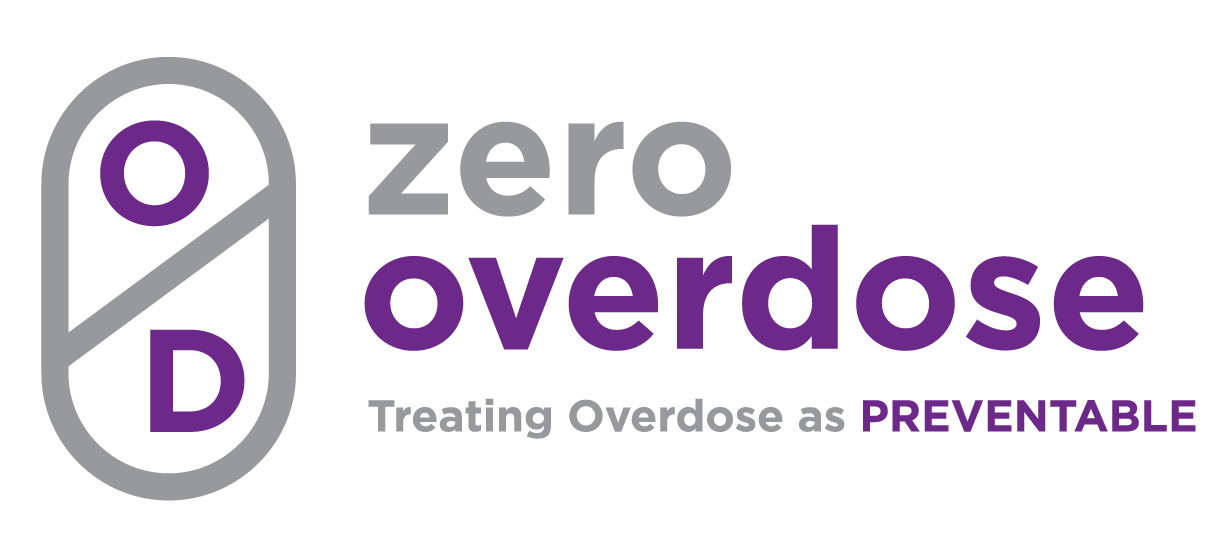Author: Jorge Petit, MD, Strategy and Development Advisor
International Overdose Awareness Day, observed annually on August 31, serves as a solemn reminder of the devastating impact of drug overdoses globally. This day memorializes those lost to overdose and underscores the need for a concerted global effort to prevent such tragedies through proactive education and intervention. Zero Overdose spearheads this mission, utilizing overdose risk screening and comprehensive safety planning to safeguard vulnerable populations.
The overdose epidemic, marked by hundreds of thousands of lives lost annually worldwide, poses one of the most dire public health crises of our era. In the United States, provisional data from the CDC’s National Center for Health Statistics reports an estimated 107,543 drug overdose deaths in 2023 alone. These losses have notably decreased U.S. life expectancy, underscoring the urgent need for effective prevention strategies. The crisis cuts across all demographics, impacting individuals, families, and entire communities, and is exacerbated by the growing prevalence of potent synthetic opioids like fentanyl.
Overdose risk screening is a vital preventative measure designed to identify high-risk individuals and intervene before a crisis occurs. Health professionals across various settings are increasingly implementing screening tools ranging from simple questionnaires during routine visits to comprehensive assessments in substance use treatment programs. Such screenings are crucial to ensure no at-risk individual is overlooked.
The Zero Overdose Safety Plan©
Zero Overdose has developed a comprehensive safety plan structured to mitigate overdose risks through several strategic steps:
1. Identifying Risk Factors: Acknowledging personal risks associated with substance use habits, methods, and environmental conditions.
2. Actionable Steps for Risk Reduction: Modifying substance use methods and employing harm reduction techniques such as naloxone use.
3. Regular Wellness Practices: These practices bolster physical and mental health, supporting overall recovery and stability.
4. Building a Support Network: Establishing connections with trusted individuals and professionals who can offer support during emergencies or challenging times.
5. Maintaining Motivation and Engagement: Focusing on personal reasons for staying alive and engaged in recovery processes.
6. Committing to Ongoing Risk Reduction: Encouraging ongoing engagement with health and safety protocols to adapt to changing personal circumstances.
Call to Action
This International Overdose Awareness Day, we urge you to take proactive steps in understanding and combating the overdose epidemic:
- Educate Yourself and Others: Learn about overdose risk factors and the life-saving role of naloxone. Share this knowledge within your community.
- Participate in Training: Zero Overdose offers invaluable training sessions on overdose prevention, naloxone use, and safety planning.
- Support Efforts Locally and Globally: Engage with organizations that advocate for overdose prevention. Your involvement can make a significant difference.
Stakeholder Engagement
Healthcare Providers: Integrate overdose risk screenings into routine assessments to identify at-risk individuals early. Training in developing and implementing personalized safety plans is also crucial.
Policy Makers: Advocate for policies that enhance public health surveillance, make naloxone widely available, and support community-based prevention programs.
Community Organizations: Collaborate with health agencies to provide educational programs and host training sessions to reduce the stigma around drug use and promote recovery.
Individuals and Families: Proactively develop overdose safety plans and participate in community workshops to enhance your understanding and ability to act effectively.
Educators and Schools: Implement a curriculum that addresses substance use, the science of addiction, and mental health to equip students with the knowledge to make informed decisions.
Employers: Foster a supportive work environment where employees feel safe to discuss substance use issues and access help. Training in overdose recognition and naloxone administration can also be vital.
Health Insurance Plans: Ensure your policies cover comprehensive services for substance use disorders, including medication-assisted treatment and overdose prevention education.
As we observe International Overdose Awareness Day, let us reaffirm our commitment to preventing overdose deaths through informed action and robust community engagement. By enhancing our efforts in risk screening and implementing comprehensive safety plans, we can protect those most vulnerable and strive for a world where no life is lost to overdose.
Resources
For further information on engaging with Zero Overdose Safety Planning, please visit our website at Zero Overdose. Here, you’ll find additional resources, upcoming training sessions, and support systems tailored to assist individuals and communities at risk.
United in Prevention: Marking International Overdose Awareness Day with A Call to Action on Overdose Safety Planning
International Overdose Awareness Day, observed annually on August 31st, serves as a poignant reminder of the devastating impact of drug overdoses worldwide. This day not only memorializes those who have lost their lives but also reinforces the need for a global commitment to prevent these tragedies through education and proactive intervention. Zero Overdose stands at the forefront of this mission, leveraging overdose risk screening and comprehensive safety planning to safeguard vulnerable populations and prevent overdose events and deaths.
Understanding the Overdose Crisis
The overdose epidemic represents one of the most pressing public health crises of our time. Globally, hundreds of thousands of lives are lost each year to overdoses, with opioids accounting for a significant portion of these deaths. In the United States, provisional data from CDC’s National Center for Health Statistics indicate there were an estimated 107,543 drug overdose deaths in the United States during 2023. The impact of overdose deaths in the US has led to a reduction in US life expectancy by 0.67 years with a loss of 3.1 million years of life or 38 life years lost per individual death. Furthermore, we know that for every 1 fatal overdose, there were approximately 10 non-fatal overdoses in 2020. Nationally, an estimated 321,566 children in the United States lost a parent to drug overdose from 2011 to 2021.
This crisis affects individuals from all walks of life, transcending age, race, and socio-economic status—as well as families and communities—necessitating a nuanced approach to prevention. The growing prevalence of fentanyl and other potent synthetic opioids has further exacerbated the risks, making the need for effective screening and safety measures more critical than ever.
Overdose events are costly in time and resources for first responders and communities. The ability to impact the number of overdose events could have a dramatic impact on the community as well as the lives of the individuals at risk.
The Role of Overdose Risk Screening
Overdose risk screening is a preventative tool designed to identify individuals at high risk of overdose and intervene before an incident occurs. This process involves assessing a person’s drug use patterns, co-occurring health conditions, and social determinants of health that may contribute to their risk level.
Healthcare providers, from emergency departments to primary care and behavioral health settings, are increasingly implementing screening tools. These tools vary from simple questionnaires that can be administered during routine visits to more comprehensive assessments during substance use treatment programs. The goal is to integrate these screenings into regular health care practices to ensure that no at-risk individual slips through the cracks.
Traditional harm reduction strategies, such as naloxone distribution and supervised injection facilities, are crucial but reactive, addressing overdoses after they occur. Overdose Safety Planning is a personalized strategy crafted to support individuals at risk of overdose. It includes creating a plan that addresses how to prevent overdose if they continue to use substances and how to seek help.
The Zero Overdose Safety Plan© is a comprehensive, structured approach designed to mitigate the risk of accidental overdoses.
Step 1 involves identifying personal risk factors such as substance use habits, methods, and environmental factors. Step 2 outlines actionable steps to reduce risks, such as modifying substance use methods and leveraging harm reduction techniques like using naloxone. Step 3 emphasizes regular wellness practices that bolster physical and mental health, thereby supporting overall recovery and stability. Step 4 and Step 5 are about creating a support network that includes trusted individuals and professionals who can be contacted in emergencies or during challenging times. This network ensures that the person has access to immediate help when needed. Step 6 focuses on personal motivation for staying alive and engaged in recovery, serving as a powerful reminder of the value of life and personal goals. Lastly, Step 7 encourages commitment to a specific next step to further reduce overdose risks, reinforcing proactive engagement in one’s health and safety. Together, these steps form a robust framework that not only addresses immediate risks but also promotes a sustainable, healthy lifestyle. These plans are not static; they evolve as individuals’ circumstances change, ensuring adaptability and relevance to their current needs.
Call To Action:
Awareness is the first step towards change. This International Overdose Awareness Day, we encourage you to engage with the issue of drug overdose actively:
– Educate Yourself and Others: Learn about the risk factors of overdoses and the critical role of naloxone. Share this knowledge with your community.
– Participate in Training: Zero Overdose offers training sessions on overdose prevention, naloxone use, and safety planning. These sessions are invaluable for those looking to make a difference.
– Support Local and Global Efforts: Contribute to or volunteer for organizations that work towards overdose prevention. Your support can make a real difference.
Resources
For more information on how to get involved in Zero Overdose Safety Planning©, please visit Zero Overdose. Here, you’ll find resources, upcoming training sessions, and support systems tailored to assist individuals and communities at risk.




